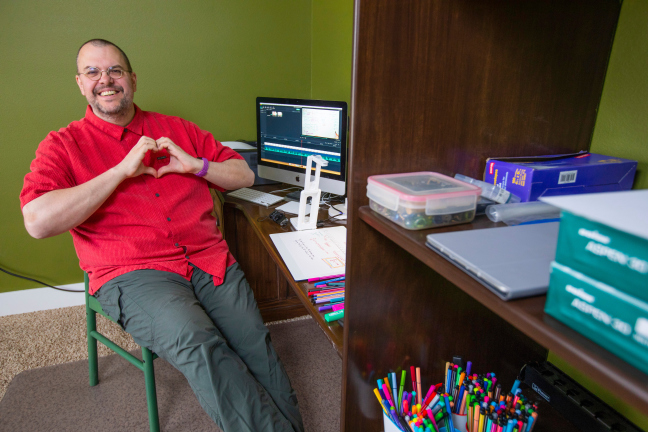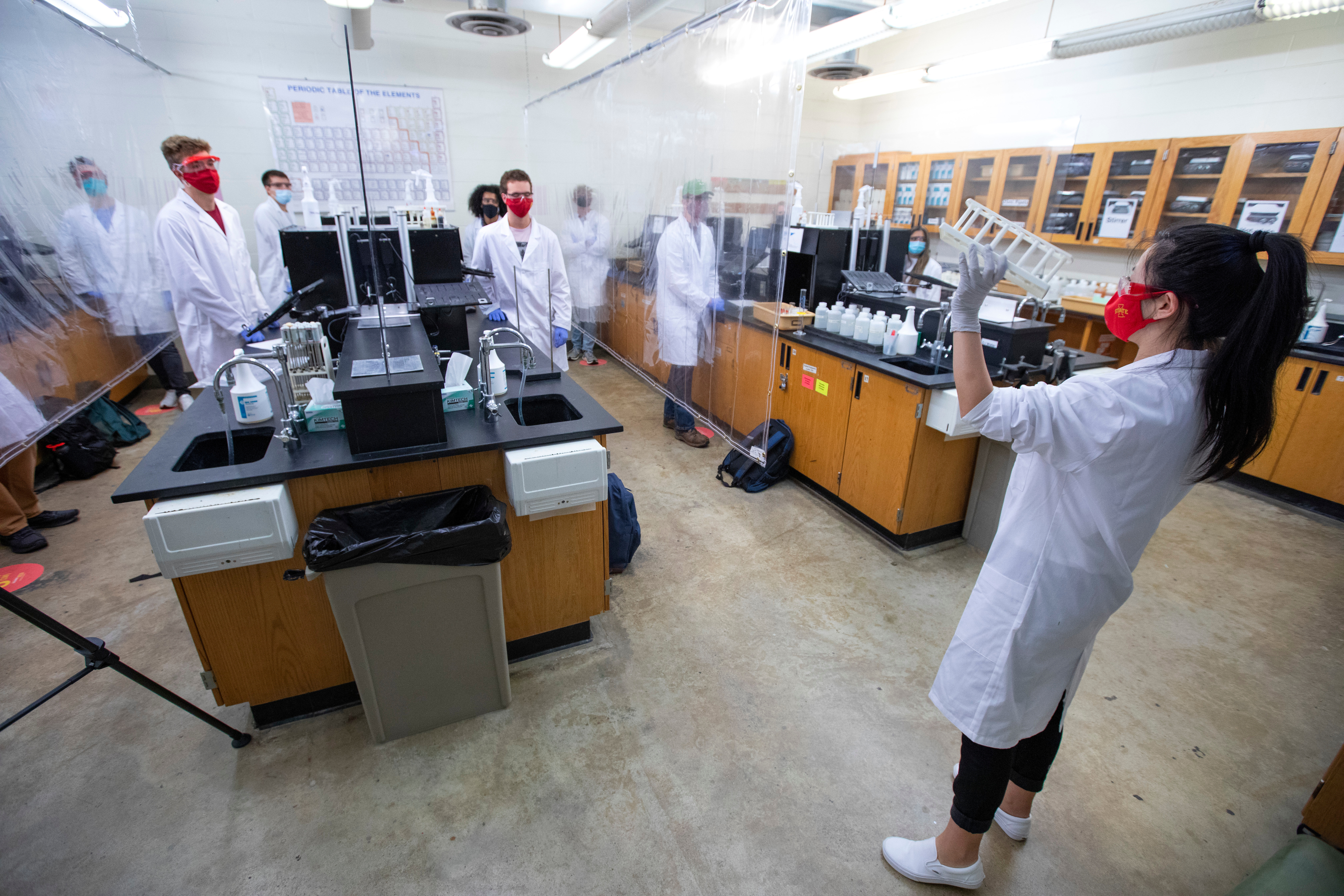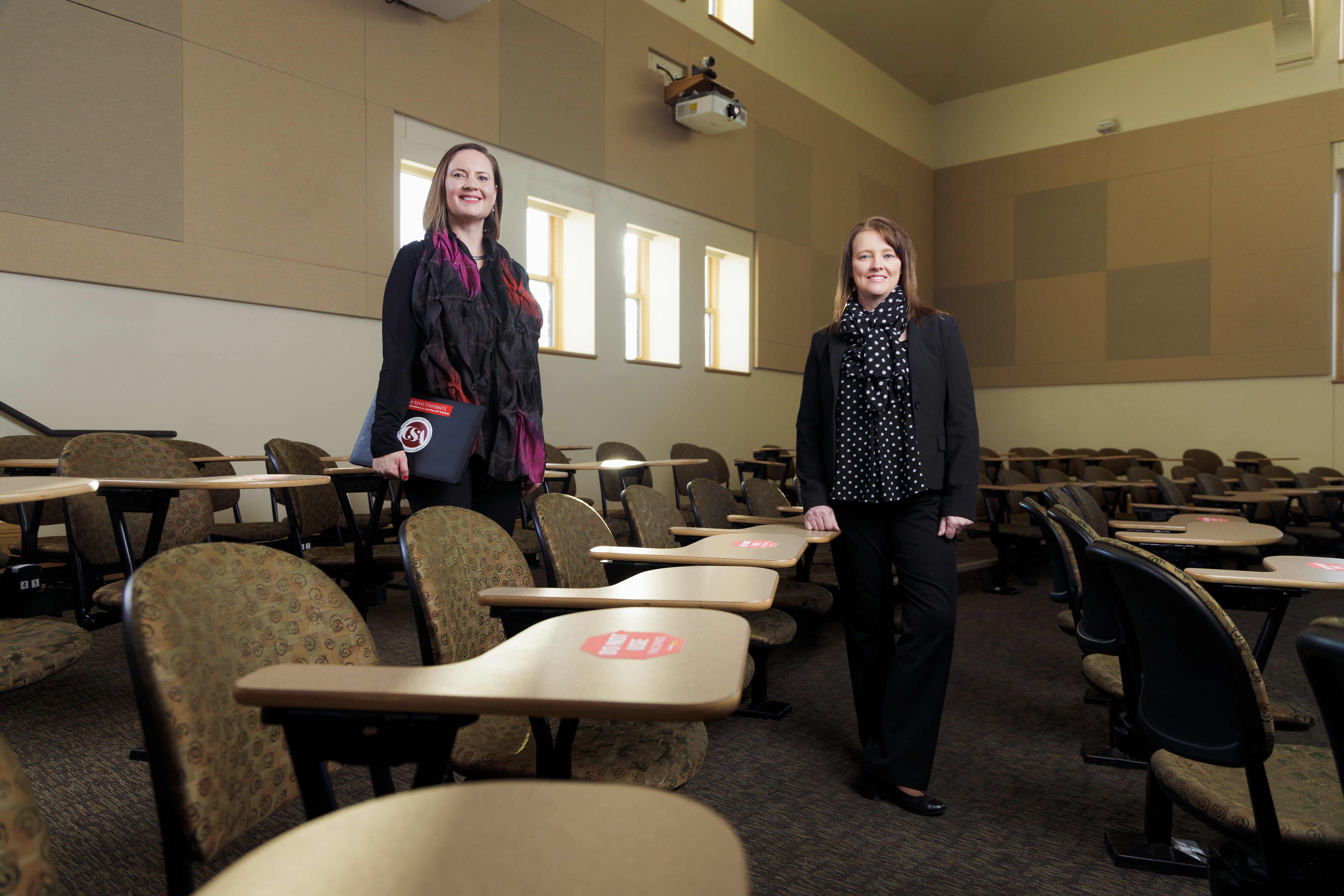
Sara Marcketti, director of the Center for Excellence in Learning and Teaching (CELT), and Amy Ward, CELT learning technologies coordinator. Photos by Ryan Riley. All photos were shot following physical distancing guidelines, and with staff wearing face coverings.
By Chelsea Davis, News Service
AMES, Iowa — Moving thousands of college courses online in one week is no small feat.
Faculty, staff and graduate students across Iowa State University made that happen over spring break in March 2020 as the COVID-19 pandemic forced the university to go virtual.
“My biggest challenge was thinking how to deal with our immediate needs, but then trying to think ahead to what might be coming,” said Sara Marcketti, director of the Center for Excellence in Learning and Teaching (CELT). “And in a pandemic, you have no idea when this might end, what will happen, and when we will get back together.”
While many universities had to delay a return to coursework last spring as they figured out how to shift online, Iowa State’s quick coordination behind the scenes allowed students to stay on schedule – albeit in a different setting.
About 4,000 course sections were moved online in addition to the 2,200 that already had an online component. CELT created a response team to field hundreds of calls from instructors needing help shifting their course online. An Academic Continuity Working Group was established to consider the variety of academic issues facing Iowa State. The pass/no-pass policy was temporarily modified to ease the effects of the sudden transition. And so much more.
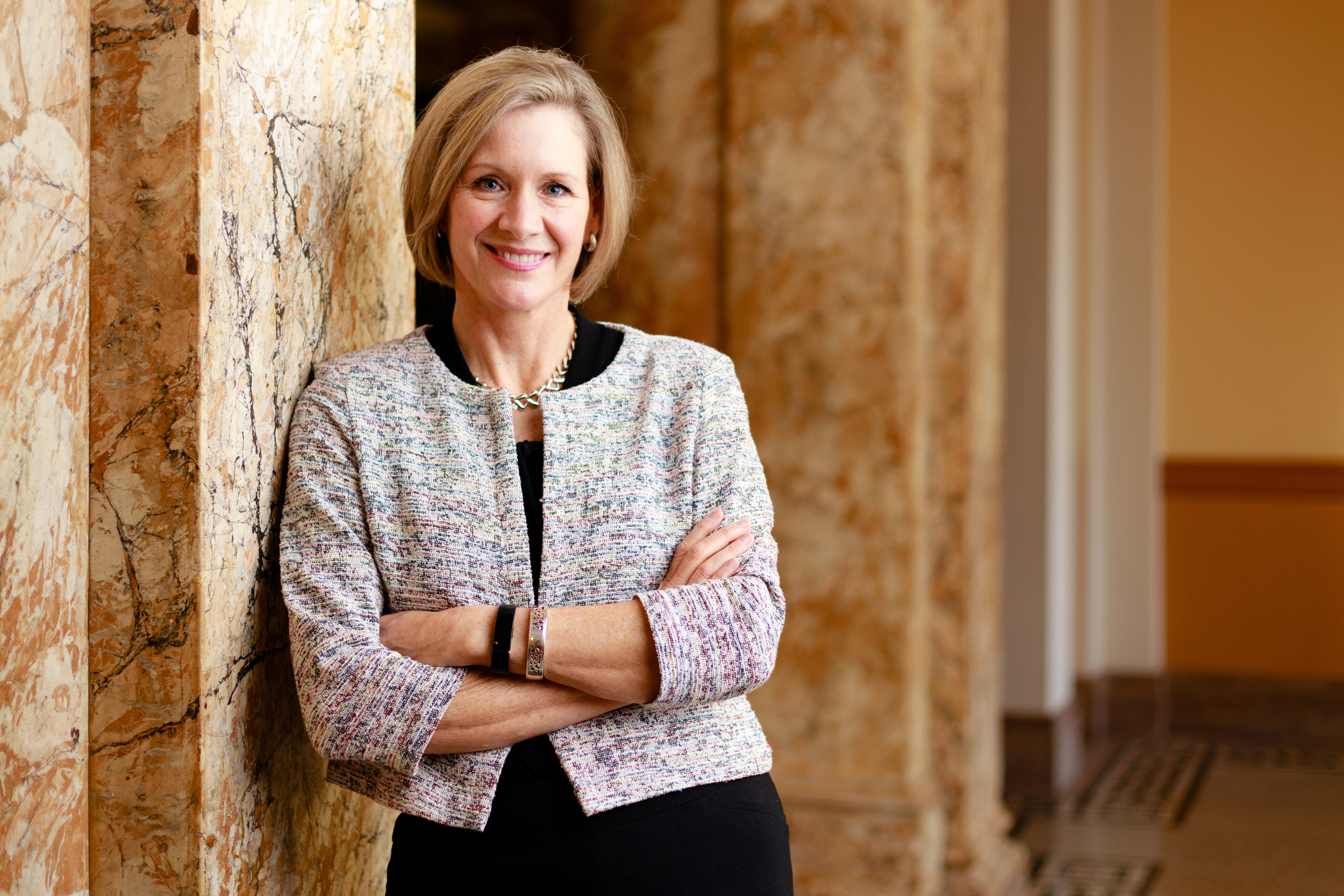
Ann Marie VanDerZanden, associate
provost for academic programs
Every decision had a ripple effect, said Ann Marie VanDerZanden, associate provost for academic programs, from academic calendar changes, to how courses are offered, to increasing passing between classes to reduce campus congestion.
“Making the number of changes in higher ed that were made in the last nine months is unfathomable,” she said. “Two years ago, I wouldn’t have thought we would be able to do what we did.”
Balancing work and personal needs
All of this was done while the ISU community, like everyone around the world, was grappling with a new personal reality. Marcketti had to adjust to remote work with three elementary-age children now learning from home. VanDerZanden was on a quilting retreat when the phone calls started pouring in about the need to quickly shift online. Amy Ward, CELT learning technologies coordinator, was mid-flight on her way to a conference when it was canceled due to the pandemic. She immediately flew back to Ames and quarantined to be safe.
“After those two weeks, I came back to work on campus,” Ward said. “A coworker and I went out and when we came back we were locked out of the building because they were shutting Iowa State down. That’s how quickly things happened.”
A recurring theme was collaboration, as faculty and staff jumped into action to coordinate the remainder of the spring semester and to begin planning for the unknowns of future semesters.
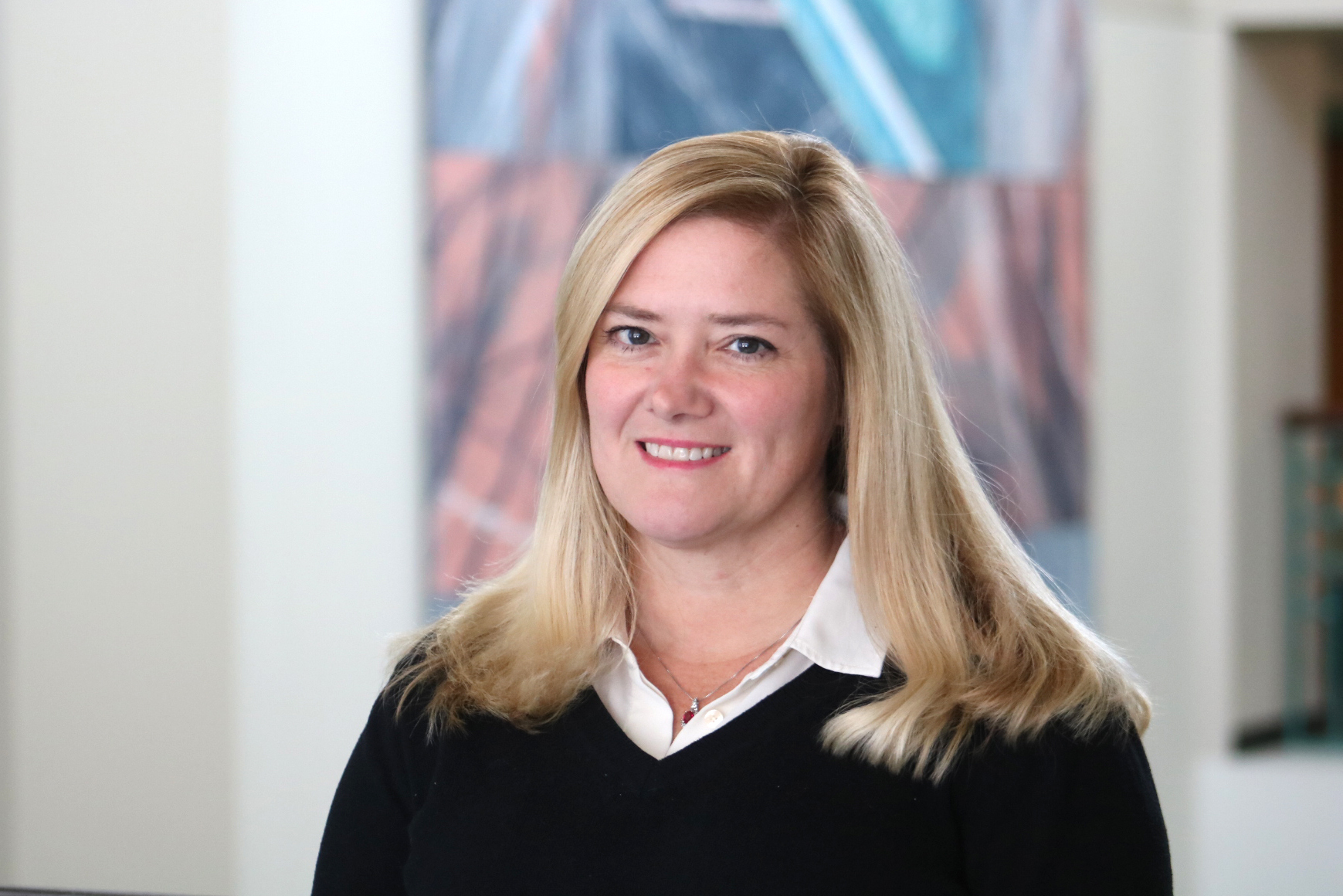
Korine Spengler, manager of network
administration for Information Technology
Services. Photo provided.
“It’s one thing to take lectures and move that portion online,” VanDerZanden said. “But experiential learning courses got really creative really fast.”
Learning technologies more important than ever
The Information Technology Services team and IT staff campuswide were critical to the success of a shift online for both students and employees. Thankfully, the building blocks were in place prior to the pandemic with only minor tweaking needed, said Kori Spengler, manager of network administration.

Michael Lohrbach, director of information
technology. Photo provided.
Several big shifts occurred. One of the first was providing Webex and Zoom training crash courses to nearly 1,000 faculty and staff. To meet the needs of students who did not have a computer, a laptop loaner program was established and supported through the University Library. And because a solid internet connection is never guaranteed, the library loaned cellular hotspots, outdoor wireless internet access was implemented on campus, and ITS worked with ISU Athletics to set up drive-up internet at Jack Trice Stadium. The ITS development teams responded quickly to support changes to campus systems for tuition and fees, financial aid, virtual commencement, fall 2020 registration, pass/not pass grading policy and many more systems — all while the majority of IT staff were moving remote along with the rest of campus.
Audiovisual staff in academic departments and ITS quickly began planning classroom upgrades and setting up faculty with web cameras and headsets (in fact, ITS ordered enough web cameras that it partnered with McFarland Clinic to equip doctors for virtual visits). In order to keep up with the need for campuswide meetings, ITS developed a new role to meet campus needs for town hall meetings, large events and virtual commencement.
“Over a couple-week period is not the way we would choose to roll out technology, but we made leaps and bounds in adopting technologies that, in regular times, tend to take a lot longer,” said Michael Lohrbach, director of information technology.
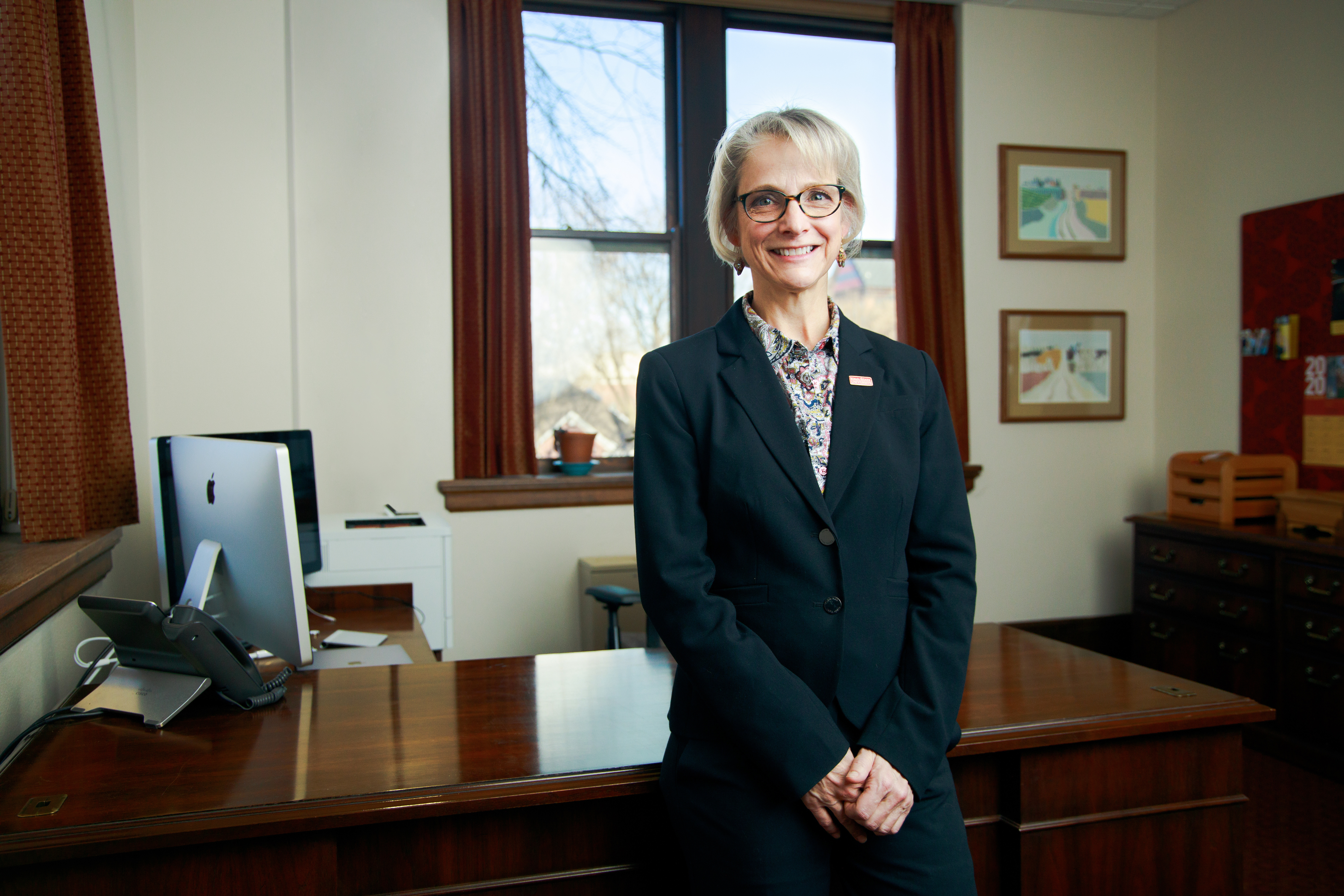
Kristen Constant, vice president and
chief information officer
As she moved from Beardshear Hall to working from home – flanked by two pugs on one side and a drum set on the other – Kristen Constant, vice president and chief information officer, realized that her adaptation to remote work was twofold. Not only did she have to figure out her own working arrangement, but her office was responsible for ensuring all of Iowa State could successfully work remotely.
“We held our breath that first day of class after spring break,” Constant said. “What will happen when all of a sudden we have hundreds of thousands of hours of people attending class remotely? With little control over students' devices and network services in people's homes, you really don’t know if the infrastructure is going to be able to handle it.
“I’m typically pretty optimistic, but boy, I couldn’t have imagined it going as well as it did.”
Although the university is one year into its COVID-19 response, ITS and CELT staff continue to monitor ongoing and upcoming needs. Everyone on campus is encouraged to continue reaching out for help and advice.
